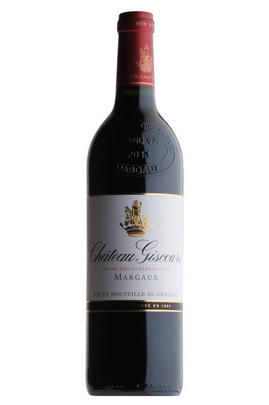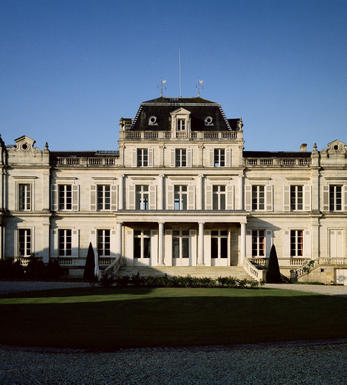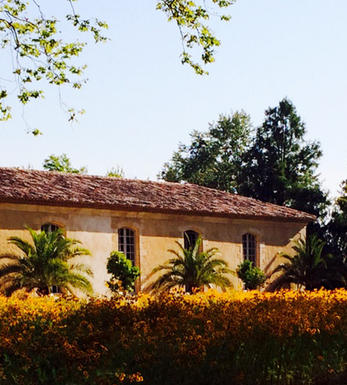
2008 Château Giscours, Margaux, Bordeaux

Critics reviews
Neal Martin - 29/07/2016
Jancis Robinson MW - jancisrobinson.com - Apr 09
James Suckling - Wine Spectator - Apr 09
Dark plum/garnet, this elegant, medium to full-bodied, beguiling, seductive 2008 is a sleeper of the vintage. Round and silky-smooth with lovely black cherry and black currant fruit imbued with touches of smoke, herbs and earth, this relatively evolved effort is best consumed over the next 15-17 years.
Robert Parker- Wine Advocate- May 2011
Giscours, made by the same winemaking team that makes Du Tertre (which did not show well in my tastings), reveals sweet tannins and overall far superior quality, which makes me think Du Tertre will improve with time in barrel. The sexy, opulent 2008 Giscours exhibits plenty of dark fruit, forest floor, and earthy notes, sweet, velvety tannin, and good fresh acids. This medium to full-bodied effort should prove to be outstanding with more time.
Robert Parker- Wine Advocate - Apr 09
About this WINE

Chateau Giscours
Château Giscours is one of the largest Margaux properties and now producing wine worthy of its 3ème Cru Classé status. It is located in the commune of Labarde and has over 80 hectares of vineyards.
Giscours was in a dire state when it was acquired by Nicholas Tari in 1952. He invested heavily and the quality of the wine improved beyond recognition. In 1995 he sold up the property to Dutch businessman Eric Albada Jelgersma.
Giscours's wine is typically a blend of 65% Cabernet Sauvignon, 30% Merlot and 5% Cabernet Franc. The grapes are fermented in temperature-controlled tanks and the wine is then aged in small oak barrels (30-40% new) for 18 months.
Giscours produces richly aromatic wines that are surprisingly powerful on the palate, displaying ripe, black fruit with hints of cedar and new oak.

Margaux
If Pauillac can be seen as the bastion of ‘traditional’ Red Bordeaux, then Margaux represents its other facet in producing wines that are among Bordeaux’s most sensual and alluring. It is the largest commune in the Médoc, encompassing the communes of Cantenac, Soussans, Arsac and Labaude, in addition to Margaux itself. Located in the centre of the Haut-Médoc, Margaux is the closest of the important communes to the city of Bordeaux.
The soils in Margaux are the lightest and most gravelly of the Médoc, with some also containing a high percentage of sand. Vineyards located in Cantenac and Margaux make up the core of the appelation with the best vineyard sites being located on well-drained slopes, whose lighter soils give Margaux its deft touch and silky perfumes. Further away from the water, there is a greater clay content and the wines are less dramatically perfumed.
Margaux is the most diffuse of all the Médoc appelations with a reputation for scaling the heights with irreproachable wines such as Ch. Margaux and Ch. Palmer, but also plumbing the depths, with too many other châteaux not fulfilling their potential. There has been an upward shift in recent years, but the appellation cannot yet boast the reliability of St Julien. However, the finest Margaux are exquisitely perfumed and models of refinement and subtlety which have few parallels in Bordeaux.
Recommended Châteaux: Ch. Margaux, Ch. Palmer, Ch. Brane-Cantenac, Ch. Rauzan-Ségla , Ch. Dufort-Vivens, Ch. Ferrière, Ch. du Tertre, Ch. Giscours, Ch. d'Angludet.

Cabernet Sauvignon Blend
Cabernet Sauvignon lends itself particularly well in blends with Merlot. This is actually the archetypal Bordeaux blend, though in different proportions in the sub-regions and sometimes topped up with Cabernet Franc, Malbec, and Petit Verdot.
In the Médoc and Graves the percentage of Cabernet Sauvignon in the blend can range from 95% (Mouton-Rothschild) to as low as 40%. It is particularly suited to the dry, warm, free- draining, gravel-rich soils and is responsible for the redolent cassis characteristics as well as the depth of colour, tannic structure and pronounced acidity of Médoc wines. However 100% Cabernet Sauvignon wines can be slightly hollow-tasting in the middle palate and Merlot with its generous, fleshy fruit flavours acts as a perfect foil by filling in this cavity.
In St-Emilion and Pomerol, the blends are Merlot dominated as Cabernet Sauvignon can struggle to ripen there - when it is included, it adds structure and body to the wine. Sassicaia is the most famous Bordeaux blend in Italy and has spawned many imitations, whereby the blend is now firmly established in the New World and particularly in California and Australia.


Buying options
Add to wishlist
Description
The long, late harvest of 2008 resulted in such ripeness at Ch. Giscours that, for the first time since 1995, five percent Cabernet Franc was of high enough quality to be added to the blend (along with 65 percent Cabernet Sauvignon and 30 percent Merlot).
Lower than normal yields have created a concentrated wine with a creamy blackcurrant palate, fine-grained tannins and spicy, oak complexity. Almost Burgundian in structure, there is a lovely roundness to this wine which is completed by an impressively long finish: a beautiful wine.
wine at a glance
Delivery and quality guarantee